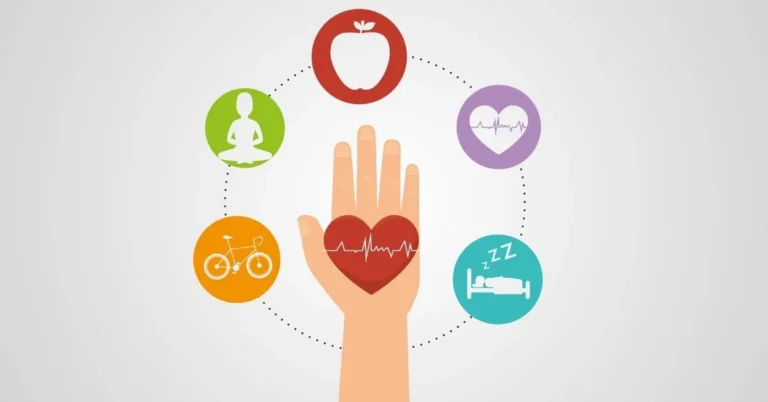The Role of ICSI in Improving Fertility Treatment Outcomes
Intracytoplasmic Sperm Injection (ICSI) is a landmark development in assisted reproductive technology (ART), providing targeted intervention for couples facing infertility. This specialised procedure involves injecting a single sperm directly into the cytoplasm of a mature egg, bypassing natural barriers to fertilisation. It is especially effective in the context of bad male factor cases, with low sperm count or poor quality semen, and where conventional IVF failed.
The number of demands for ICSI has really increased, with cities like Mumbai becoming centres of advanced fertility treatment due to the availability of better clinics and doctors. ICSI treatment in Mumbai has redefined possibilities that were considered to be impossible otherwise.
This article explores the finer nuances of ICSI and the role it plays in improving fertility treatment results while discussing the challenges accompanying its use. It gives an inside understanding of the mechanics involved, success rates, and further impact on reproductive health.
Understanding ICSI and Its Role in Fertility Treatment
ICSI is a specific form of IVF where the direct injection of sperm into an egg ensures that even in situations where natural conception is improbable, fertilization takes place. It is particularly helpful for men because, in this procedure, there is no reliance on the motility or the ability to penetrate through the sperm, which can often be problematic in traditional IVF procedures. The term “intracytoplasmic” focuses on the injection of sperm directly into the cytoplasm, a gel-like substance necessary for fertilization.
This is especially useful for patients with low sperm count, poor sperm quality, or conditions such as azoospermia (sperm absence in semen). Moreover, ICSI gives hope to patients using frozen eggs or sperm, those who have failed attempts at IVF, or women of advanced maternal age, whose egg quality may compromise fertilization success.
The ICSI Procedure: A Step-by-Step Overview
Preparation Phase
Egg Retrieval: The process starts with ovarian stimulation, in which hormonal medications are administered to stimulate the production of multiple eggs. When the eggs are mature, they are retrieved through a minimally invasive procedure using a thin needle guided by ultrasound.
Sperm Collection: On the day of egg retrieval, sperm is collected by ejaculation or surgical extraction if male infertility is severe. A semen analysis is performed to ensure that the sample is of sufficient quality for ICSI.
Fertilization Stage
During the procedure, a trained embryologist uses high-tech micromanipulation equipment to choose a single, viable sperm. The sperm is immobilised, aspirated with a thin needle, and injected into the cytoplasm of the mature egg. The injected egg is then monitored in a controlled laboratory environment for signs of successful fertilisation.
Post-Fertilization Monitoring
Within five to six days, the fertilized egg ideally develops into a blastocyst, a structure ready for implantation. The timing of the embryo transfer—immediate or after cryopreservation—depends on individual circumstances and medical recommendations.
Benefits of ICSI in Fertility Treatment
ICSI has revolutionised fertility treatment by addressing challenges traditional methods cannot overcome. Key benefits include:
Improved Fertilization Rates: ICSI directly injects the sperm into the egg, and this eliminates the uncertainty that occurs in natural fertilisation, especially when the male is with severe infertility.
Versatility: ICSI is efficient using frozen or poor-quality sperm and eggs. It offers hope for couples with limited viable options.
Overcoming Previous Failures: It offers hope to the individual who has had repeated failures of IVF as it specifically targets some barriers to fertilization.
Broader Applicability: ICSI allows the use of donated sperm or eggs, thus accommodating different fertility conditions.
Success Rates and Challenges
ICSI has good fertilization rates of almost 50% to 80%, but live birth may occur based on the embryo, uterine health, or maternal age. Despite these encouraging success rates, there exist challenges associated with ICSI. These include:
Egg Risks
The injection process risks damaging the egg. This can prevent fertilization or compromise embryonic development. Although skilled embryologists reduce this risk, it is an inherent limitation of the procedure.
Embryo Viability
Not all fertilized eggs develop into viable embryos. The factors that influence the likelihood of successful development include egg and sperm quality and lab conditions.
Health Risks
Children conceived through ICSI may face a slightly elevated risk of congenital conditions, such as Angelman syndrome, Beckwith-Wiedemann syndrome, and hypospadias. However, these risks are comparable to those associated with infertility itself rather than the procedure.
ICSI’s Role in Addressing Male Infertility
Male infertility accounts for nearly half of all infertility cases, and ICSI is a key solution. It addresses conditions such as:
- Low Sperm Count: ICSI provides a guarantee of fertilization despite scarce availability of sperm.
- Poor Sperm Quality: The possibility of picking up a single, normal-looking sperm overcomes problems with morphological abnormalities.
- Obstructive Conditions: Blockage in the male’s reproductive tract or retrograde ejaculation are not obstacles to the process since sperm can be surgically retrieved.
These specific difficulties have made ICSI a core component of ART for male infertility.
Technical Innovations in ICSI
The success of ICSI is largely due to advancements in reproductive technology. High-resolution imaging, precision micromanipulation tools, and robust laboratory protocols enhance the procedure’s accuracy and safety. Cryopreservation techniques allow for the storage and future use of eggs, sperm, or embryos, offering flexibility to individuals undergoing treatment.
The future of ICSI outcomes may be improved further by emerging technologies, such as non-invasive embryo assessment and genetic screening. These technologies are designed to improve the processes of selecting embryos and reduce the risks of chromosomal abnormalities.
Ethical and Emotional Considerations
The treatment of infertility often involves ethical and emotional issues. Choices over the use of donor sperm, the disposition of unused embryos, and multiple attempts to conceive can be burdensome for patients.
Emotional support from counsellors and healthcare providers is very helpful in dealing with these challenges. A good communication relationship and information-driven decision-making process help to reduce anxiety and build up a positive experience in the process.
Future Developments of ICSI
The more research is being done that increases the effectiveness of ICSI, the more its success is maximised. Advancements, including time-lapse imaging or monitoring embryo development through AI-powered selection, allow for enhanced monitoring and improved success. Risk reductions in procedures and protocols inside the laboratory are also said to make ICSI procedures easier and faster.
The third promising advancement is the integration of genetic testing, which detects possible hereditary conditions before implantation. This step ensures healthier outcomes for both parents and offspring.
Conclusion
ICSI has redefined fertility treatment, giving hope to infertile couples, especially those with severe male factor problems. It has become a milestone of assisted reproductive technology as it directly deals with barriers to fertilization. With high fertilization rates and adaptability to complex cases, ICSI has emerged as a reliable option for couples exploring fertility solutions, such as those seeking ICSI treatment in Mumbai and other metropolitan areas.
While challenges such as egg damage and congenital risks exist, progress in technology and personalized care will continue to improve the outcomes. The future of ICSI has even greater promise for making parenthood a reality for all individuals worldwide as research continues to grow.







